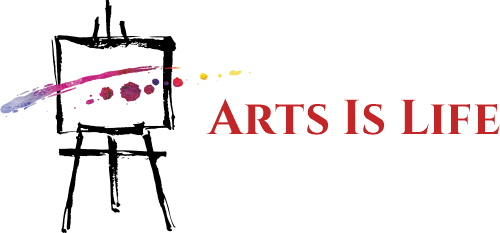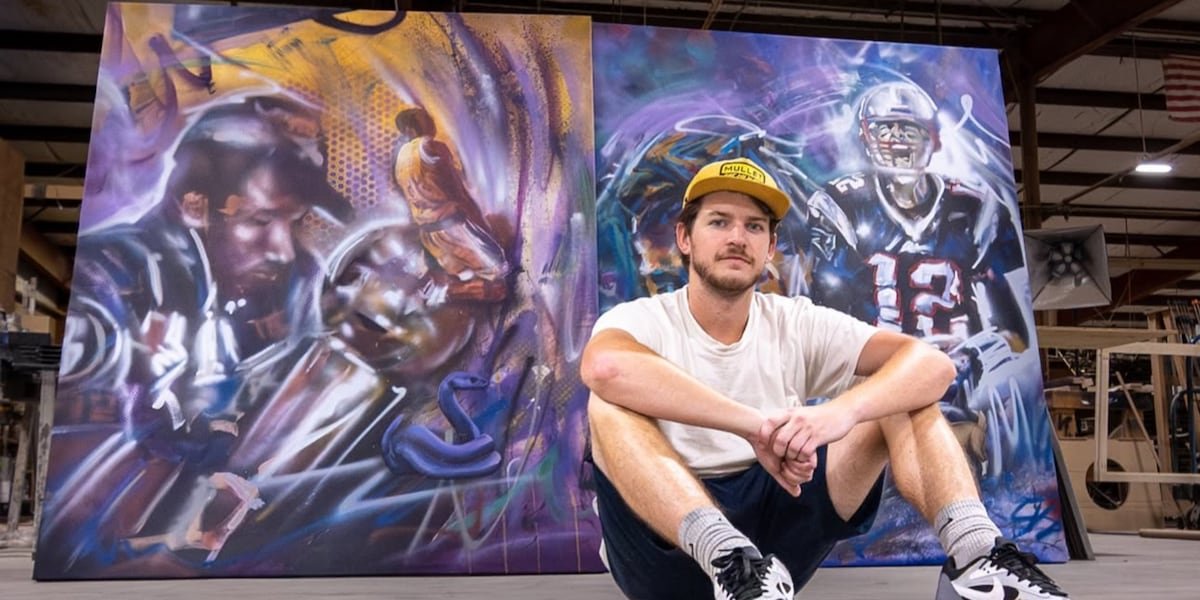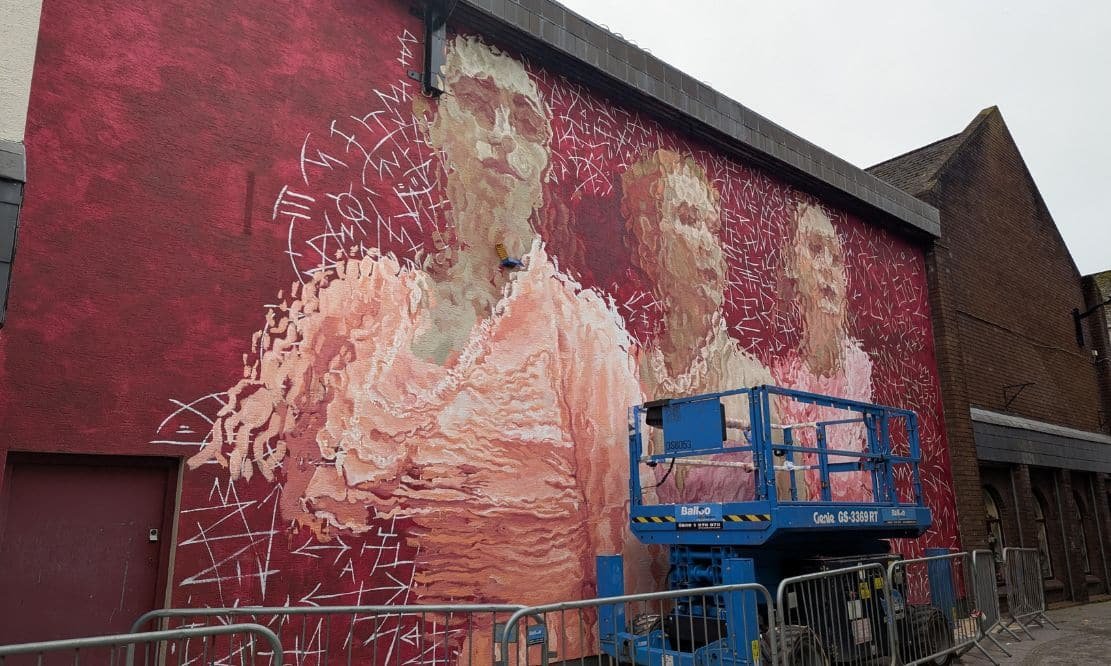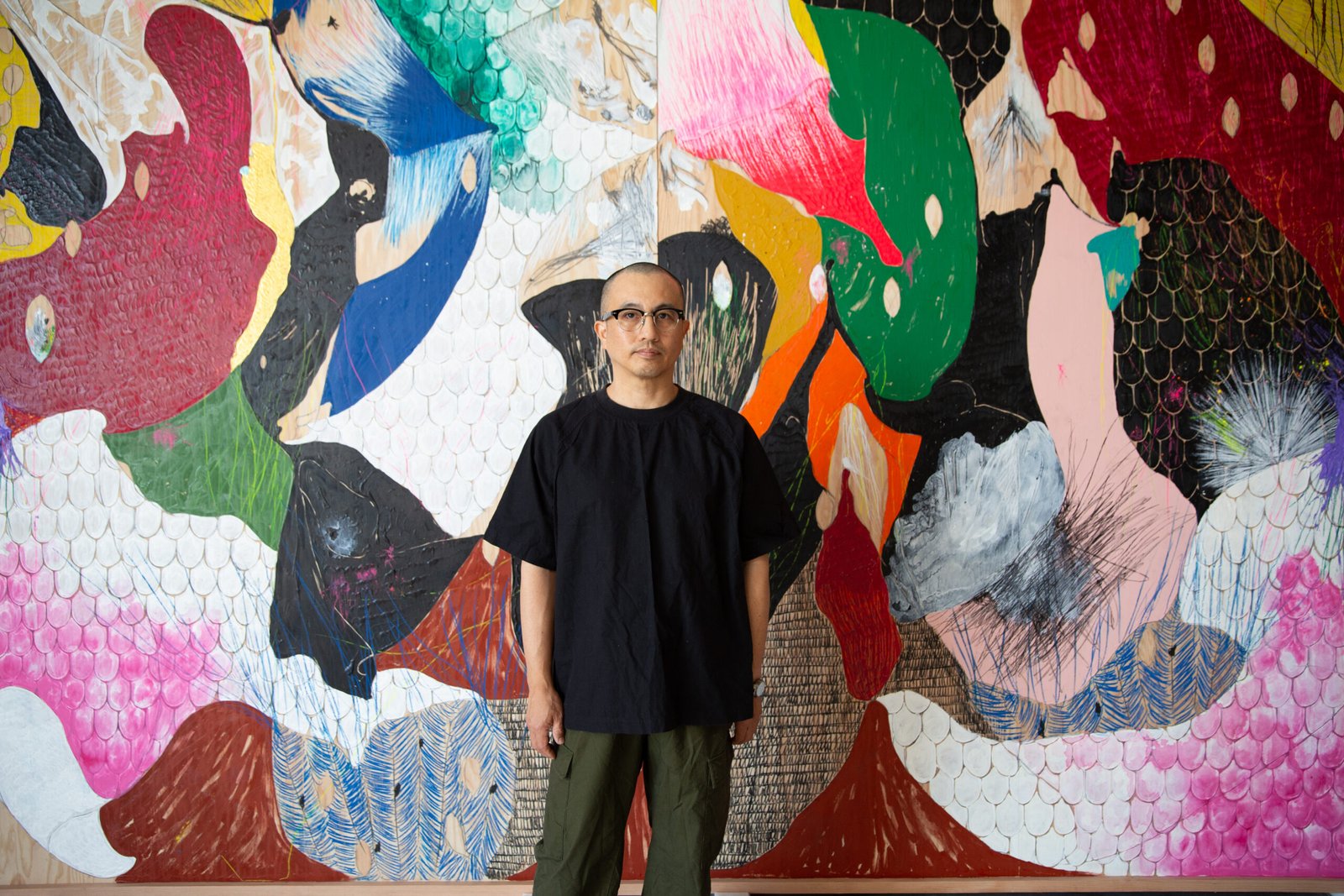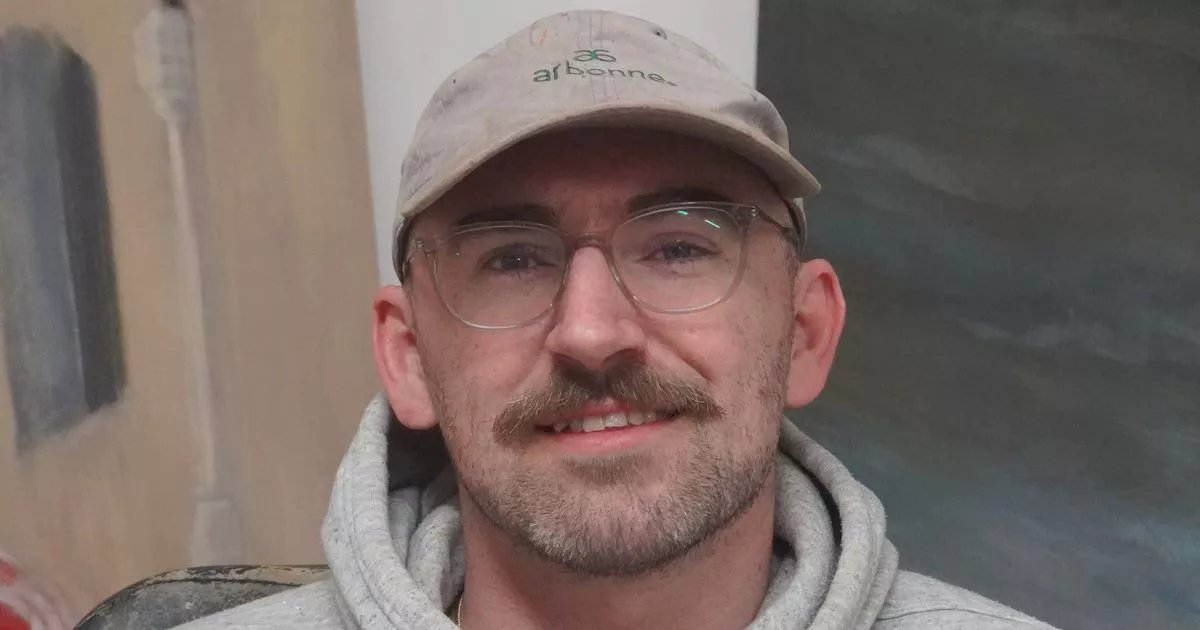It’s a joke, but Schwartz did a lot to nurture and grow the contemporary art scene, with influential galleries in Melbourne in the 1980s and Sydney in the noughties (she was advised to settle in Paddington so opened in Carriageworks, near Redfern). Today, she is an engaging conversationalist – but you have to work for it. At one point, she listens to me with laser focus talk about the only modern artist I, personally, know – before picking up exactly where she had left off, leaving my rambling anecdote untouched by the side of her plate.

Anna Schwartz inside the Carriageworks gallery in 2008.Credit: Peter Braig
Now, her four-decade career running galleries will soon finish. In December, Schwartz will shut her Anna Schwartz Gallery on Flinders Lane and reinvent it as Anna Schwartz Projects. Given her stature, having represented well-known contemporary artists over decades, it feels a big change.
“I want to invent a model that is going to sustain me for the rest of my life. Next year, I will be 75,” she explains. “My commitment to the innovative will remain the same.”
Schwartz will leave the ground-floor gallery space and move her operations upstairs to create special event art projects featuring exhibitions, performance, music and collaborations with long-time friends and colleagues – Marcia Langton is one name in the frame.
The curator sees art breaking away from gallery walls, into businesswoman Jo Horgan’s vast cosmetics emporium Mecca, the talk of Melbourne since it opened around the corner on Bourke Street Mall, and the grand concourse of Sydney’s Central Station, where Rose Nolan, currently exhibiting at Anna Schwartz Gallery, has a huge public commission.
“I want to bring what I do and what artists do into sharper focus. I want to work against complacency. I think that people take for granted our institutions and the extraordinary hard work that the gallerists have done,” Schwartz says.

Anna Schwartz with Wendy Whiteley, from the book Present Tense.
Working with artists, facilitating commissions and advising on private acquisitions for collections (her clients have included Michael Buxton, Corbett Lyon, and Marc and Eva Besen) will continue.
How does she choose her artists? Everyone asks this, she says. “It’s a very difficult, unanswerable question. It’s a bit like falling in love, but intellectually.”
Does she ever pick up a brush herself? “Ha, no. My form is as a gallerist.”
You are not only a collector of art, but also of people, I observe.

Raw tuna with green olives at Gimlet.Credit: Simon Schluter
“It’s true. I know a lot of people, and a lot of people know me. That’s a great privilege.
“I remember when I first met Morry, he said, ‘Oh, you’re the strangest person I’ve ever met because you don’t read magazines and all your friends are over 70’.”
Morry is Schwartz’s third husband, Morry Schwartz, the developer-publisher and owner of Schwartz Media, which publishes The Saturday Paper, The Monthly, Quarterly Essay and Black Inc books. They married in 1993.
She is clearly a private individual but Present Tense: Anna Schwartz Gallery and Thirty-Five Years of Contemporary Australian Art by Doug Hall (published by Black Inc) tells extraordinary stories of Melbourne’s arts scene and Schwartz’s life. The interconnectedness of Melbourne, its cultural and Jewish communities, is everywhere.
Schwartz’s paternal family arrived as Jewish émigrés from Poland in 1938; Schwartz met art patrons John and Sunday Reed when she was 19. Her first husband, artist Joel Elenberg, a friend with artist Brett Whiteley, died from cancer aged 32. Schwartz, who remains close friends with Wendy Whiteley, later married filmmaker Bob Weis in the 1980s. On page 74 of the book, a young Morry Schwartz is involved in a minor car crash. Elenberg and Weis – neighbourhood friends of his youth – were with him in the same car.

Rock flathead with vermouth sauce at Gimlet.Credit: Simon Schluter
Schwartz reports her entrée – raw tuna with green olives and smoked chilli ($38) – as “faultless, fresh, delicious” but “not too cheffy”. “Most restaurants I kind of recoil from but anything Andrew produces, I am really happy to eat.”
My entrée special of Spencer Gulf prawns with calamari ($48) contains braised butter beans which offset the seafood brilliantly.
Schwartz labels our choice of mains “unadventurous” after we both order rock flathead with sorrel and vermouth sauce ($56). Schwartz requests her mussels be removed. It’s comfort food meal in the European tradition of Gimlet, the sweet-flavoured fillets sitting upon an aromatic vermouth sauce. And yes, another glass of champagne. Each.
Loading
The press release announcing the move from Anna Schwartz Gallery to Anna Schwartz Projects contains a long list of contemporary artists the gallery and Schwartz herself had supported over the years, including Shaun Gladwell, Kathy Temin, Warwick Thornton, Justene Williams and Mike Parr.
In December 2023, Schwartz severed ties after 36 years with Parr, a performance artist and long-time friend, after he had painted the words “Israel” and “Nazi” during a performance piece in her gallery. The relationship was over, but Schwartz let the work remain on display.
But Schwartz will barely be drawn on the conflicts in Melbourne’s cultural life over Gaza as she studies the crowd of diners and responds slowly.
“I’ve had a lot of various relationships with artists over the years. A lot of artists that the gallery had relationships with and then ceased. And so there’s nothing so anomalous about that, really.
“One always hopes at the inception of relationships, that they’re going to flourish, and they often do for many years, and then, for various reasons, they come to an end.”
We are interrupted by a waiter. The moment is lost.
Later, I try again, with a question about the impacts of the Israel Gaza conflict on the Melbourne cultural scene.
“Oh, I don’t really want to discuss that,” Schwartz said. “I think it’s an unnecessarily culturally divided time in Australia. I value a society which can support discussion … in a civilised, intelligent way.”
Loading
She delivers a philosophical response, but how have the past couple of years been personally?
“Well, I guess my personal life and my career are two trajectories,” Schwartz says thoughtfully, before continuing. “Are you sure you don’t want to use your teaspoon? Have a tiny bit? It’s too much for me.”
She is distracting me with her serving of gelato. I succumb.
On other issues, she is vocal, railing against some collectors.
“I think a lot of art collecting today is souveniring, buying the names.

Anna Schwartz at Gimlet.Credit: Simon Schluter
“Art and culture are pluralistic, that there are all kinds of ways of living, seeing, collecting, whatever. I’m not interested in that. I’m interested in the kind of really serious presentation of ideas at the forefront of art practice as is generated by a long history, by a long trajectory of thinking and philosophising in this domain. That’s where I find it worthwhile.”
She wants to show me the humour in the gallery’s latest exhibition of artist Rose Nolan.
But I had heard the gallery wasn’t open today. “It’s not, but I have a key.”
As I go to pay, I am confronted by a journalist’s worst fear – I have left the credit card at home and have to pay for lunch myself. The bill is $361.50.
Loading
Schwartz has wandered off, stopped in the middle of the restaurant, talking to a couple dressed incognito in overcoats and baseball caps pulled low. The attractive woman and her older male companion are pleased to see Schwartz. After they finish, the man bestows a generous nod of semirecognition on me as he passes. It is the singer, Paul Kelly.
As Kelly and his partner, Sian Darling, recede down Flinders Lane, Schwartz remarks: “He really is the voice of Australia. You are not going to write that … are you?”
